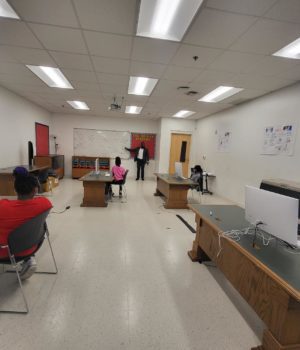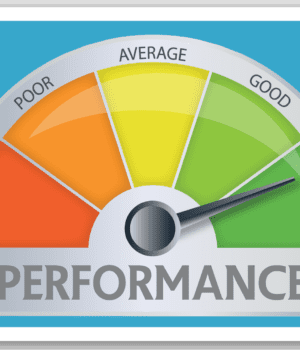
A “Hole” Bunch of Food for Thought
The doughnut economy sounds like a nice treat to have with a morning coffee but it is actually a serious rebuttal to the growth-centered economies of the present day. In 1934, the concept of gross domestic product (GDP) – the sum of consumption, investment, government spending, and exports minus imports – was created to compare the relative economic performance of one country to another. By 1944, the US had cemented GDP growth as its primary metric for how well the economy was doing. In 1960, American economist Walt Whitman Rostow analogized the US as an airplane that solves social equity and other economic issues as GDP climbs higher. Starting with her book Doughnut Economics: Seven Ways to Think Like a 21st Century Economist published in 2017, Oxford University economist Kate Raworth raised issues caused by this myopic focus on GDP growth in mature economies. Professor Raworth argues that it is well and good to fly the plane high, but at a certain point, a nation needs to fly at a proper altitude that includes social justice and environmental sustainability metrics included in how we judge a society and its economy.
Professor Raworth uses the image of a doughnut, with the outer circle being an environmental ceiling and the inner circle a social justice foundation. Between these two circles lies the doughnut where environmental sustainability, social justice and economic performance are in equilibrium. Living beyond the environmental ceiling, or outer circle of the doughnut, means that people are using resources in an unsustainable way; this leads to environmental degradation giving rise to other problems like ocean acidification, loss of biodiversity, and climate change. Falling through the social foundation and into the doughnut hole means that vulnerable communities are food insecure, houseless, receiving an inadequate education, or susceptible to disease and famine. To live within the “dough” of the doughnut means that a society is living sustainably, and its most vulnerable members are equitably cared for alongside the rest of society. However, the doughnut economy is not just reserved for nations; cities and even organizations can adopt its principles to make change at a more focused level.
Professor Raworth argues that nothing in nature grows indefinitely. A growth on a mature organism, like a cancer, can wreak havoc on an otherwise healthy body. The economy is made up of the collective actions and choices of people. It is a living and organic network reacting to social trends and the environment. Prioritizing perpetual GDP growth would continue to stress the planet’s systems and stratify social equity. Cities like Amsterdam have made commitments to transition to the doughnut economics model. City officials and organizations are embracing changes that would benefit the planet and the most vulnerable of their society. The doughnut economy asks us to measure that which adds meaning and dignity to the planet and those we share it with.
There are no specific prescriptions to transition to a doughnut economy. Any network looking to shift from a growth-at-all-cost model to a sustainable and equitable doughnut model needs to look at the specific niche and community they operate within. Charter schools are in a unique position to implement the doughnut model into their organization because they have close ties to the communities which they serve. When the community wins, the school wins, and the school can support positive future outcomes for the community. This upward bound partnership encourages charter schools to implement changes that serve the wellbeing of the community. Examples of this are Executive Education Academy having teachers make home visits to students – the teachers make sure students are not falling behind and have internet service for distance learning – or building a LEED-certified building to lower the charter school’s impact on the environment. Charter schools and CMOs benefit from engaging with their communities to find out where the most impactful changes can be made first.
The secret of the doughnut economy is changing the priorities, metrics and incentives of organizations operating within it. To paraphrase School Improvement Partnership Director Arthur Mitchell, we are what we measure. Therefore, instead of simply measuring academic achievement, a charter school may measure academic growth as well, particularly among students from economically disadvantaged backgrounds. Instead of simply determining whether the charter school is producing sufficient liquidity to meet its financial covenants, determine the percentage of BIPOC employees and contractors. The doughnut model might incentivize a charter school to adopt culturally competent pedagogy or hire from within the community. Traditional metrics that charter schools are currently held to, like attendance and test scores, could be revised to see if they are still relevant in the digital age. The beauty of the doughnut is that it prioritizes the environment and social equity alongside traditional metrics.
Charter schools and CMOs are in a particular position to make impactful changes on communities by adopting a doughnut model. Making small changes to the incentives and metrics through which we measure school performance can have a large impact. The School Improvement Partnership Database provides a way to aggregate these evolving data points so that institutional investors and analysts can have a doughnut with their morning coffee while reviewing their portfolio. The doughnut economy asks us to measure that which adds meaning and dignity to the planet and those we share it with.
The author, Dominic De Leo, is a Charter School Data Intern working on the School Improvement Partnership Database with financial, operating and academic metrics on every charter school – and charter school borrower – in the country. Dominic graduated Magna Cum Laude from Temple University with a Degree in Economics.



